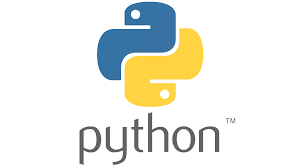
What is an Iterable?
In Python, an iterable is an object that can be looped over, such as a list, tuple, or string. An iterator is an object that represents a stream of data, and it can be used to traverse through all the elements of an iterable. The built-in function iter() can be used to create an iterator from an iterable. Once an iterator is created, the built-in function next() can be used to retrieve the next element from the iterator. The iterator automatically raises a StopIteration exception when there are no more elements to return.
Note:
- Every iterator is also an iterable, but not every iterable is an iterator in Python.
- An iterable is an object that can be looped over, such as a list, tuple, set, dictionary, or string. These objects have an in-built dunder method called iter() which allows them to be iterated over. In other words, an iterable is something that can be used in a for loop and implement the protocol of iteration.
- An iterator, on the other hand, is an object that represents a stream of data and it can be used to traverse through all the elements of an iterable. An iterator has the
__next__()method, which returns the next item of the object. It also keeps the state of the iteration, which means it remembers where it is in the iteration. The built-in function iter() can be used to create an iterator from an iterable. - To make an object an iterator, it needs to define the
__iter__()method, which returns an iterator, or a__getitem__method with sequential indexes starting with 0. - Therefore, an iterable is something that can be iterated over, but an iterator is an object that does the actual iterating.
Example: Creating an Iterator from a list as follows:
my_list = [1, 2, 3, 4, 5]
my_iter = iter(my_list)You can then use the next() function to retrieve the next element from the iterator.
print(next(my_iter)) # Output: 1
print(next(my_iter)) # Output: 2You can also use a for loop to iterate over the elements of an iterator:
for element in my_iter:
print(element)This will output:
3
4
5You can also use the __next__() method to retrieve the next element from the iterator
print(my_iter.__next__()) # Output: 3It’s important to note that once the iterator reaches the end of the iterable and there are no more elements to return, it will raise a StopIteration exception.
Example: Making a class Iterable by creating custom Iterator
class MyNumbers:
def __init__(self, numbers):
self.numbers = numbers
def __iter__(self):
return MyNumberIterator(self.numbers)
class MyNumberIterator:
def __init__(self, numbers):
self.numbers = numbers
self.index = 0
def __next__(self):
if self.index >= len(self.numbers):
raise StopIteration
current = self.numbers[self.index]
self.index += 1
return currentIn this example, the MyNumbers class has a __iter__() method that returns an instance of MyNumberIterator. The MyNumberIterator class has a __next__() method that returns the next element in the list of numbers and keeps track of the current index.
You can use a for loop to iterate over the elements of the MyNumbers class:
numbers = MyNumbers([1, 2, 3, 4, 5])
for number in numbers:
print(number)This will output:
1
2
3
4
5It’s important to note that the __iter__() method should return a new iterator object every time it is called, otherwise, it will not work correctly if you try to iterate over the same object multiple times.
Note: also read about Python __name__ Variable
Follow Me
Please follow me to read my latest post on programming and technology if you like my post.
https://www.instagram.com/coderz.py/
https://www.facebook.com/coderz.py
Staying up to the mark is what defines me. Hi all! I’m Rabecca Fatima a keen learner, great enthusiast, ready to take new challenges as stepping stones towards flying colors.
Leave a Comment
You must be logged in to post a comment.